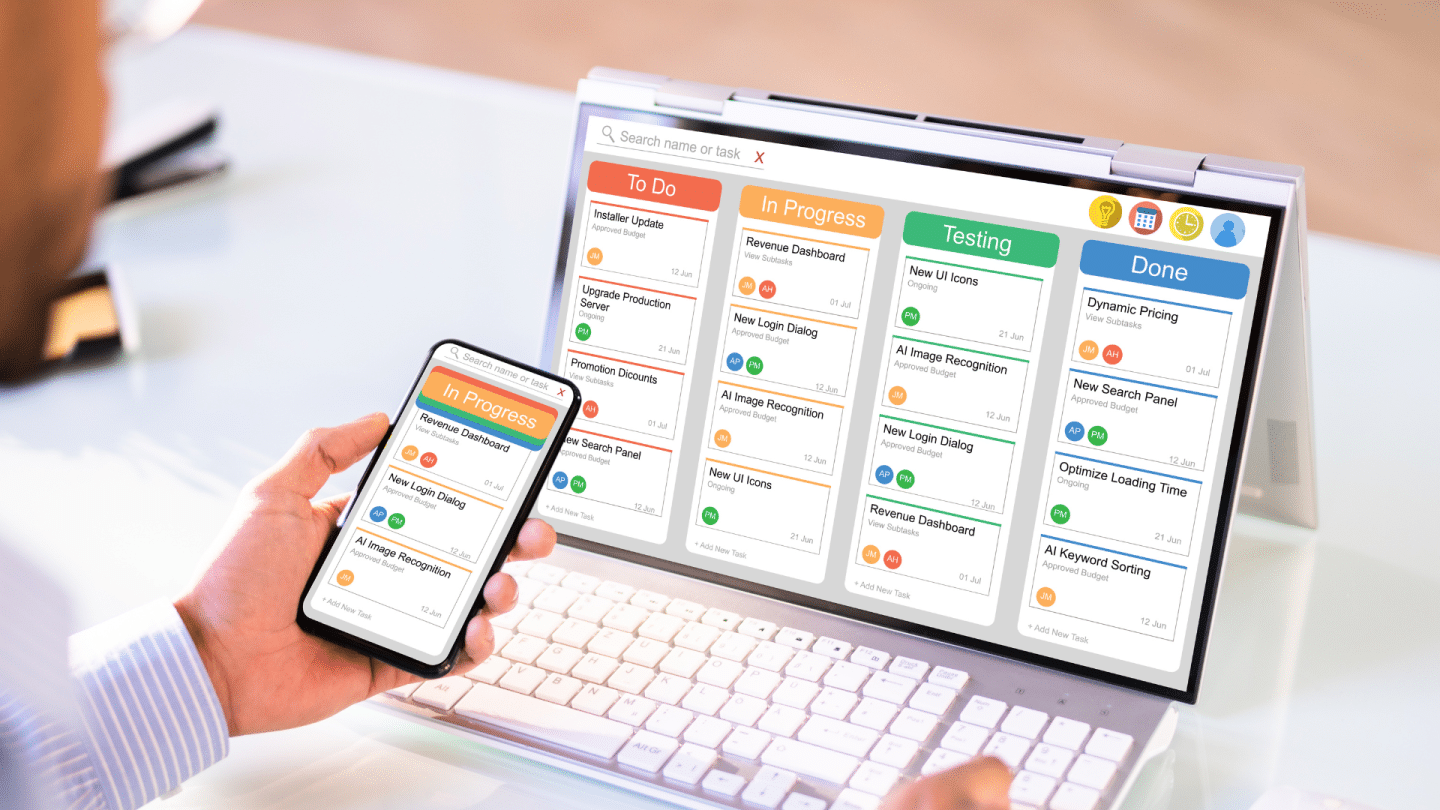Running a successful tutoring business requires more than just great teaching skills. Managing student enrollments, scheduling classes, handling payments, and tracking progress can quickly become overwhelming. To maximize efficiency and profitability, tutoring businesses need to leverage Tutoring Management Software—a tool that automates operations, streamlines communication, and improves overall business performance.

What is Tutoring Management Software?
Tutoring Management Software is a specialized platform designed to help tutoring centers, private tutors, and online educators automate administrative tasks and improve operational efficiency. It integrates key features such as student CRM, scheduling, payment processing, and performance tracking to ensure a seamless experience for both tutors and students. By reducing manual work, this software helps tutoring businesses scale while maintaining high-quality service.
How Tutoring Management Software Boosts Profitability
1. Automates Administrative Tasks
Manual administrative work consumes valuable time and resources. By automating tasks such as class scheduling, attendance tracking, and invoicing, tutoring software reduces the need for manual intervention, allowing tutors to focus on teaching and business growth. With automation, businesses can handle more students without increasing workload, thereby increasing profitability.
2. Enhances Student Enrollment and Retention
An efficient student CRM system helps tutoring businesses manage leads, track student progress, and follow up with potential clients. Automated reminders and personalized communication improve student engagement and retention rates. The ability to track student interactions ensures a seamless experience, reducing dropout rates.
3. Improves Scheduling and Class Management
With automated scheduling tools, tutors can avoid double bookings and last-minute cancellations. Integrated calendar systems ensure students and parents stay informed about upcoming sessions.
Example: Teachworks offers a robust scheduling system that syncs with Google Calendar, making class management seamless. Tutors can schedule group or one-on-one sessions while students receive automated reminders to reduce no-shows.
4. Streamlines Payment Processing and Invoicing
Late payments can negatively impact cash flow. Tutoring Management Software integrates secure payment gateways, automates invoicing, and sends overdue payment reminders to ensure tutors get paid on time. Businesses can also offer various payment options, such as credit cards, PayPal, and direct bank transfers, to increase convenience for parents and students.
Example: TutorCruncher provides automated payment tracking and multiple payment options, simplifying financial management. The software supports direct debit, online card payments, and invoicing, helping tutors maintain financial stability.
5. Tracks Student Progress and Performance
A built-in progress tracking system allows tutors to monitor student performance, generate reports, and share insights with parents. Data-driven decisions improve student outcomes and enhance the credibility of the tutoring business. Parents can receive regular updates on their child’s learning progress, creating a transparent learning environment.
6. Enhances Communication with Students and Parents
Timely communication is crucial for a tutoring business. Automated SMS and email notifications keep students and parents informed about class schedules, payment reminders, and academic updates. Effective communication increases student engagement and ensures a better learning experience.
Example: SimplyBook.me enables automated messaging, ensuring effective tutor-student-parent communication. Tutors can send customized reminders for classes, homework, and feedback to keep students on track.

Key Features to Look for in Tutoring Management Software
When selecting Tutoring Management Software, consider the following features:
- User-Friendly Interface – Ensures easy navigation and minimal training.
- Customizable Scheduling Tools – Allows flexible class management and integration with third-party calendars.
- Secure Payment Processing – Supports multiple payment gateways and automated invoicing.
- Student CRM and Enrollment Management – Helps track leads, student progress, and communication history.
- Automated Notifications and Reminders – Enhances communication and reduces missed appointments.
- Cloud-Based Access – Enables remote management from any device and ensures data security.
- Performance Analytics – Tracks tutor efficiency, student engagement, and revenue growth.
Future Trends in Tutoring Management Software
The tutoring industry is evolving rapidly, and technology continues to shape how educators interact with students. Here are some emerging trends:
1. AI-Powered Learning Insights
Artificial intelligence is being integrated into tutoring management systems to provide deeper insights into student learning patterns. AI-driven recommendations help tutors personalize lessons based on individual student progress, leading to improved learning outcomes.
2. Mobile Optimization
With an increasing number of students and tutors using mobile devices, software providers are focusing on mobile-friendly solutions. Mobile apps for scheduling, messaging, and lesson tracking improve accessibility and convenience for all users.
3. Gamification Features
Interactive learning tools, such as quizzes, leaderboards, and achievement badges, boost student motivation and participation. Gamification techniques are being used to make learning more engaging and effective.
4. Advanced Security Measures
As tutoring businesses handle sensitive student data, software providers are enhancing encryption, compliance with GDPR, and secure cloud storage solutions. Data privacy and security remain a top priority for educational institutions.

Best Practices for Implementing Tutoring Management Software
1. Assess Your Business Needs
Before selecting a software solution, it’s crucial to evaluate your current operational challenges and define your long-term goals. A clear understanding of your needs ensures you choose a system that truly supports growth and efficiency.
- Analyze the size of your team, student base, and number of classes.
- Identify key pain points (e.g., manual scheduling, delayed payments, communication issues).
- Prioritize must-have features like calendar syncing, automated reminders, and payment tracking.
- Consider scalability for future growth (multi-branch or multi-location support).
2. Train Your Staff and Tutors
Successful implementation depends on your team’s comfort and proficiency with the platform. Proper onboarding not only reduces mistakes but also improves adoption rates.
- Schedule onboarding sessions and create quick-start guides or video tutorials.
- Assign tech-savvy team members as internal champions to assist others.
- Offer scenario-based training (e.g., booking a class, issuing an invoice, sending updates).
- Encourage regular practice and open communication for troubleshooting.
- Provide refresher training sessions after major software updates.
3. Monitor Performance and Make Adjustments
Once the software is up and running, continuous evaluation ensures you’re getting the most value from it. Monitoring performance allows you to identify inefficiencies and scale what’s working.
- Track KPIs such as class occupancy, student engagement, and tutor availability.
- Use built-in analytics to identify trends in peak hours or payment delays.
- Set goals (e.g., reduce no-shows by 25%) and measure progress monthly.
- Regularly review software usage to identify underused features and adjust workflows.
4. Engage with Students and Parents
Collecting feedback and staying responsive to your clients’ needs builds trust and improves the learning experience.
- Send periodic surveys asking about ease of booking, communication, and class quality.
- Implement suggestion boxes or feedback forms within the app.
- Respond quickly to concerns and communicate improvements made based on feedback.
- Highlight features like real-time updates or payment transparency that benefit parents directly.
Conclusion
Investing in Tutoring Management Software is essential for running a profitable tutoring business. By automating administrative processes, improving student engagement, and ensuring smooth financial operations, tutors can focus on what matters most—delivering high-quality education.
With advancements in AI, mobile integration, and security features, tutoring software will continue to evolve, offering even more efficient solutions for educators. Choosing the right software today can set your business up for long-term success.
Explore the best tutoring management tools with Flowclass today and take your business to the next level!


